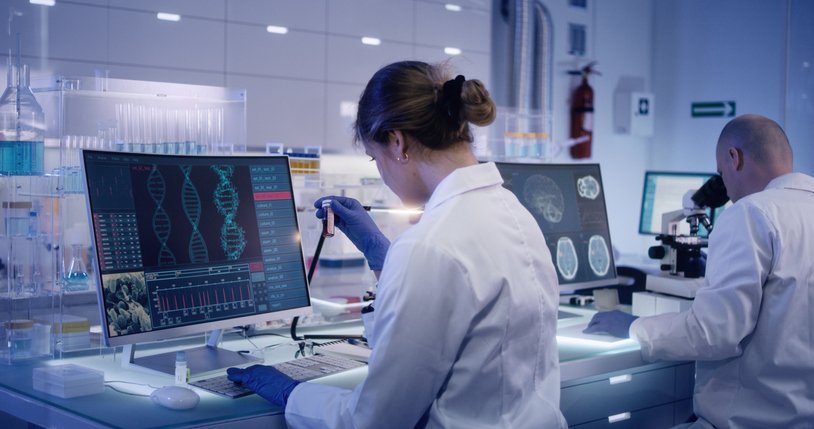Genomic surveillance will continue to be an integral part of the global effort to deal with the Covid-19 pandemic.
Catherine Reilly reports on work to establish a national whole genome sequencing programme in Ireland
A business case for the National SARS-CoV-2 Surveillance and Whole Genome Sequencing Programme (NSWGSP) is “in development”, the HSE confirmed to the Medical Independent (MI) earlier this month.
The NSWGSP’s overarching aim is to use whole genome sequencing (WGS) to inform and enhance the urgent public health response to the pandemic and support infection prevention and control.
A programme has been designed with two parallel streams – surveillance and targeted sequencing. Surveillance involves routine sequencing for surveillance purposes, whereby a representative sample of positive specimens suitable for sequencing is sequenced to monitor for variants of concern (VOCs) or other sequence changes.
Targeted sequencing relates to sequencing in specific circumstances, eg, at the request of public health departments involved in outbreak investigations; travel-associated cases; vaccine escape/re-infection cases; cases from suspected or confirmed hospital outbreaks; investigation of epidemiological changes in pathogen behaviour/viral pathology shifts.
Not all samples are suitable for WGS.
Samples must have a viral titre/Ct value (cycle threshold) below a certain level to be suitable for sequencing. Up to 40 per cent of samples will not be suitable for sequencing for various reasons including Ct values >25, according to the HSE.
In early July, the NSWGSP was sequencing 1,000 to 1,200 samples per week (approximately 50 per cent of cases in preceding weeks) with additional surge capacity available if required. Generally, most samples (70 per cent) are surveillance samples from the community; about 20 per cent are related to outbreaks; and 10 per cent linked to travel.
Not all samples from an outbreak need to be sequenced and some hospitals are currently sequencing samples locally.
The NSWGSP steering group has requested that all travel-related cases be referred for WGS, though not all cases may be eligible for sequencing on the basis of the viral titre/Ct value.
Travel-related cases refer to both imported cases and those that acquire their illness from imported cases.
It is a “significant logistical undertaking” to transport the samples suitable for WGS from the national network of labs in a timely fashion, the HSE’s spokesperson informed MI.
The logistical complexity is “further amplified” by the fact that currently samples undergo “very necessary” VOC PCR screening prior to referral and transport for WGS.
“Many samples may not reach the sites where WGS is performed until seven-to-10 days after the case has been diagnosed. The HSE logistics team have worked extremely hard in recent months to streamline this process.
“On arrival at the laboratory that undertakes WGS, the average turnaround time from sample receipt in the laboratory to release of result is about 14 days, with a range of seven-to-21 days. In the laboratory, the whole genome sequencing process itself takes three days from when RNA is extracted from samples.”
Surveillance samples tend to be nearer the upper limit of the seven-to-21-day turnaround time, with typically reduced turnaround times for targeted sequencing samples. “Therefore, time from sample request by public health doctors to receipt of sequencing results to inform outbreak management is typically 2.5 to three weeks. Consequently, in practical terms, the results of VOC PCR screening assays are used to guide public health actions while confirmatory WGS results are awaited.
“WGS results (both SARS-CoV-2 lineage results (eg, B.1.1.7), as well as more detailed analyses of nucleotide differences between genomes of the same lineage), when available, then serve to confirm or refute the presence of VOCs, support or refute the presence of an outbreak, and may be used to historically link additional cases with particular outbreaks.”
Sequencing is not a control measure of itself. However, it is “a useful adjunct to inform medium to longer term public health actions”, according to the HSE’s spokesperson.
“Countries with short turnaround times for sequencing of samples continue to be dramatically impacted by the pandemic.”
The NSWGSP will “continue to build capacity and work to reduce turnaround times, insofar as is possible”.
According to the HSE, the programme is working to improve turnaround times by streamlining referral pathways to WGS services, providing guidance on samples to prioritise for WGS, and incorporating local laboratories into the programme.













Leave a Reply
You must be logged in to post a comment.